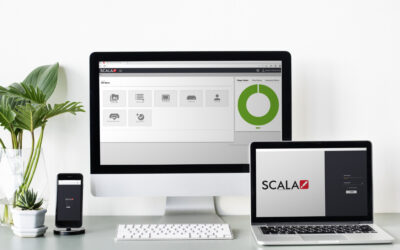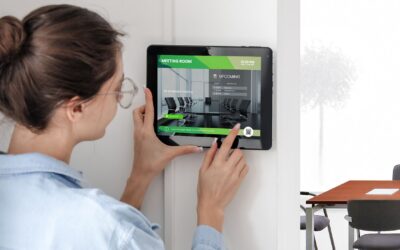Healthcare Landscape in Southeast Asia
Southeast Asia (SEA) is one of the fastest growing markets in the world. The SEA healthcare industry is well poised for growth as demand for quality healthcare in SEA increases and countries rapidly jump on the health tech bandwagon.
Healthcare spending in Southeast Asia is forecasted to increase to US$740 billion by 2025, compared to $420 billion in 2017. Meanwhile, healthcare spending in the ASEAN 6 (Singapore, Indonesia, Philippines, Malaysia, Thailand and Vietnam) has already outpaced the growth of many countries.
Today, the delivery and innovation of healthcare solutions are guided by consumer needs. Hospitals are investing heavily in innovative solutions to enhance the patient experience. A 2019 survey reported that Thailand spends 6.5% of its GDP on public healthcare and has the sixth best healthcare system in the world. In Malaysia and Vietnam, hospitals are driving a shift towards digital healthcare delivery, spending 4.2% & 7.1% of GDP, respectively, on their healthcare systems.

COVID-19 Impact on Healthcare Systems
According to Mr. Zubin J Daruwalla (Health Industries Leader of PWC Singapore), “COVID-19 has most certainly imposed what was a long time coming.” The pandemic has accelerated the arrival of what Mr Daruvalla terms the “New Health Economy”.
The increasing fear of hospital-borne infections and heightened need to follow safety guidelines have pushed hospitals to reduce patient waiting times and facilitate faster queues. Hospitals have also leveraged digital technologies to elevate the experience for patients and visitors.
Rise of Digital Health
Digital health trends like IoT devices, telemedicine and virtual reality surgical training have taken the world by storm. Recently, the Thai government built the BKK HI Care platform, a telemedicine platform to remotely monitor COVID-19 patients. The system keeps a record of patient’s food intake, temperature and prescriptions. This information is easily accessible to nurses and doctors via mobile phones. Today, 285 healthcare facilities in Thailand are monitoring 9,000 patients in an efficient and safe digital manner.
In addition, hospital digital signage is gaining traction in helping to improve operation efficiency and creating a seamless experience for patients, visitors and employees.
Here are several ways in which digital signage for hospitals can help to enhance the patient, visitor and employee experience.
Digital Wayfinding
A first time patient or a visitor tends to get confused in the maze-like design of hospitals. Navigational issues in hospitals cause stress and anxiety for the patients/visitors. This may also cause lower productivity of the staff members who are continuously asked for directions
Digital signage at hospitals with touchscreen capabilities are deployed at crucial hospital entry and exit points to help patients and visitors navigate their way around
Digital Check-in
Digital check-in kiosks speed up the check-in process and minimise queues. This solution also reduces the need for staff to assist with patient check-in.
Reduce perceived waiting times
Digital signage placed at the waiting areas can screen videos, display informative messages, and offer real-time updates of the number of patients in the queue. These interventions reduce perceived waiting times and increase satisfaction
Reduce anxiety
Digital signage for hospitals can offer calming videos and visuals to ease anxiety and create a serene atmosphere, especially at operating theatre waiting areas.
Personalized Care
Bedside touch-screen tablets can display real-time information about current course of treatment, health progress and other useful health tips. These tablets can also feature meal menu options and facilitate meal ordering.
The patients at the Singapore General hospital have access to iPads by their bedside with an app installed to see their daily schedules, medical test results, medications etc. This increases patient engagement and streamlines hospital operations
Interactive Educational Content
Interactive digital screens at hospitals can display educational content to inform patients and visitors about the symptoms, prevention and management of common illnesses.
Touchless Payment Options
Self-checkout kiosks with various payment options at the hospital pharmacy promote a seamless billing process and reduces queues.
Scala Modernises Hospitals
Scala played an integral role in modernising the Pantai Hospital in Kuala Lumpur. The hospital underwent a major renovation which included giving a modern, futuristic look to a new 12-storey building, and accommodating the growth in patients and hospital personnel.
Scala strategically placed 45 digital displays throughout six different zones in the new wing and introduced a digital wayfinding and interactive directory video wall.
Scala provides effective and reliable hospital digital signage solutions to elevate the patient experience, streamline operations, and promote a safe and pleasant environment. Find out more about Scala healthcare solutions here.
About the Author
Esther Chew is the Sr. Manager – Corp Comm & Marketing at STRATACACHE Asia-Pacific and is responsible for developing and implementing the internal and external communications strategy and programmes across Asia-Pacific. She drives the company’s corporate image and brand messaging through integrated and strategic communications leveraging various platforms such as executive communication, client communication, digital marketing, media relations and B2B events.





